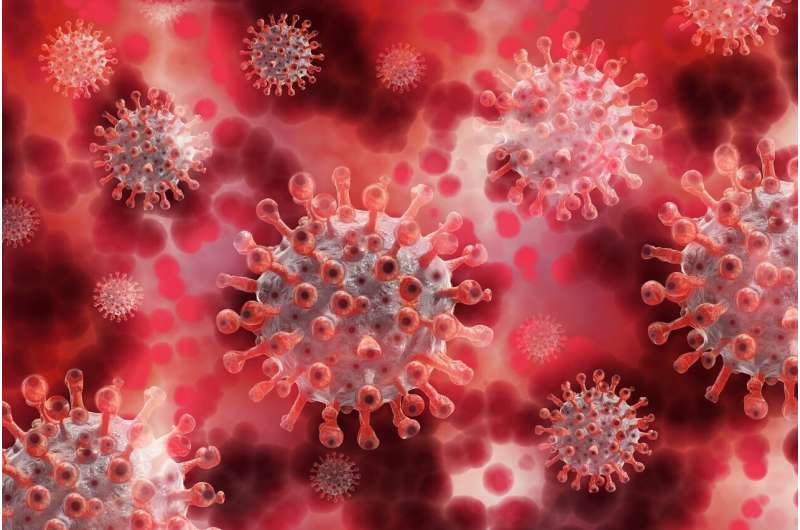Traveling or considering a night on the town? Best time to test for COVID is right before you leave


A new study by Yale School of Public Health epidemiologists shows that event organizers can nearly halve the risk of their guests transmitting COVID-19 by testing people at the door.
The team’s research, published in the International Journal of Public Health, is the first to use statistical analysis to gauge how effective test-timing strategies are at limiting the spread of COVID-19. Ideally, the researchers said, people should be tested on the day of an event to best protect others in their immediate social or work group. Policies that require people to have a negative COVID test within 72 hours or more of their arrival at a location—which many countries enforce for travelers—hardly help, the researchers said.
That’s because coronavirus grows exponentially in the human body, said senior author Jeffrey Townsend, the Elihu Professor of Biostatistics at the Yale School of Public Health. A rapid-antigen (RA) test, taken early enough, can fail to detect faint traces of the virus before it builds up enough load to trigger a positive test. After a matter of hours, someone who tested negatively—yet who was unknowingly infected and contagious—could quickly spread the virus to others.
“Typically, the disease has a very short period where it is really highly transmissible,” Townsend said. “Go back just a little bit of time and there’s often hardly any virus in you, compared to just a little later, when your viral load could be surging.”
Townsend and his colleagues used mathematical modeling to understand how transmission changes with testing at different time intervals. Without any testing, the probability that just one person infected with COVID would transmit the virus to one or more individuals after the start of an event is roughly 40%, according to the study. That risk drops more and more as the testing is performed closer and closer to arrival time, the researchers said.
Compared to no testing, conducting a test 72 hours before an event only reduces the amount of transmission by COVID by roughly 4% percent, the study said. In contrast, testing immediately before the event can eliminate transmission entirely at a small event, and at large events will typically reduce the amount of transmission by more than 40%.
“We’re not the first people to say that you should test closer to an event,” Townsend said. “But this study really nails it down: it matters an enormous amount—and here’s the curve that shows it.”
If testing immediately prior to social mixing is not possible, testing 12 hours before can still help. The researchers’ models indicate that tests performed 12 hours before an event can reduce the probability of COVID transmission by more than 25% percent. If testing is done 24 hours in advance, the risk lowers by less than 20%, the researchers said.
As part of their analysis, the researchers also assessed more than a dozen different rapid-antigen (RA) home tests to see if the type of test people use could be a factor in reducing transmission risk. They found that RA tests are more effective than so-called “gold standard” RT-PCR tests in some situations (like when you test immediately before an event) because they provide results quickly.
Source: Read Full Article